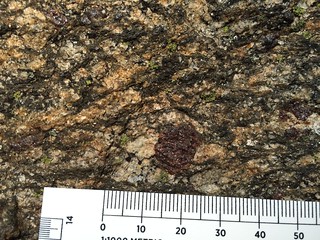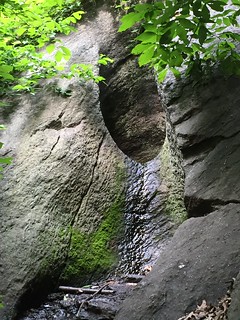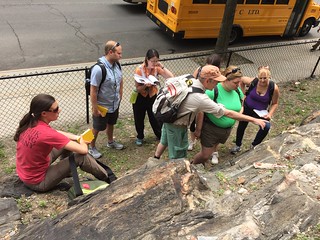This field trip provided another view of the local NYC geology, with all its complexity. Because we were not given a field trip guide ahead of time, I looked up some information about the site and what's there. Here are the links: Bedrock Geology of New York City: More than 600 m.y. of geologic history and 6. Pelham Bay Park (USGS). Don't you love going into the field knowing what you might find? I do.
Here's what I saw: the Bronx section of the Fordham Gneiss, loads of folding, partial melting (we've seen that on all stops thus far), a patch of garnet sand, tourmaline, epidote, beryl, biotite and muscovite (sometimes intergrown with each other) and kyanite blades (see below)! Sillimanite? No, I don't think so.
And a dinosar:
Bring on the Black Rock Field Trip!! That'll be all week, the week of July 27. Just like old times and field camp at CSU Hayward in the Sierra. Ha!














